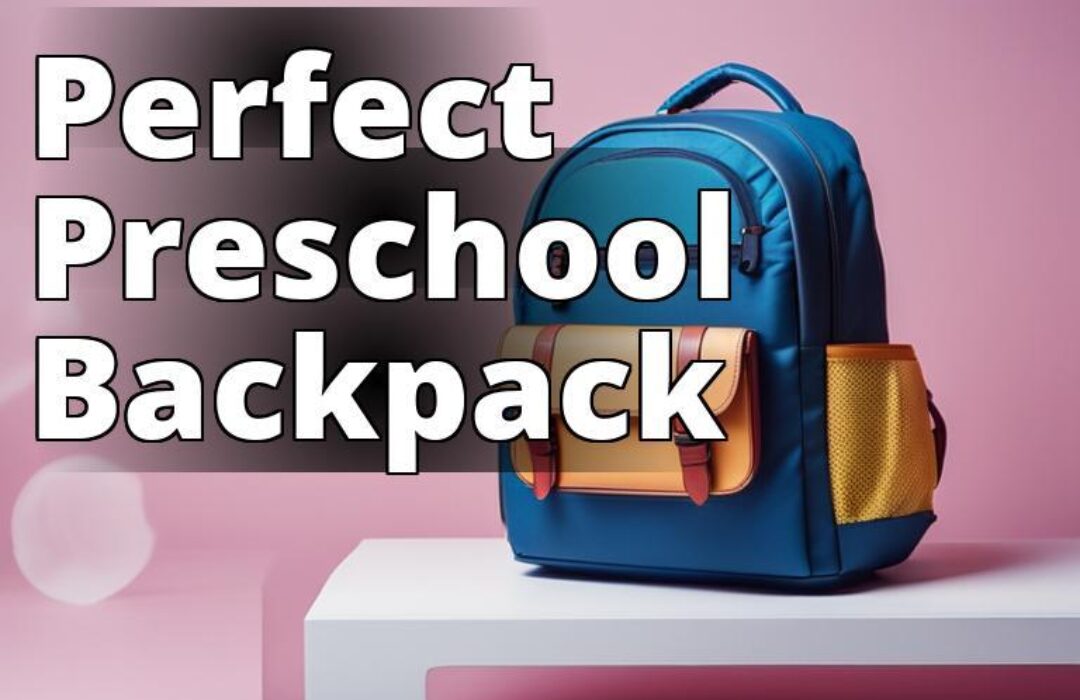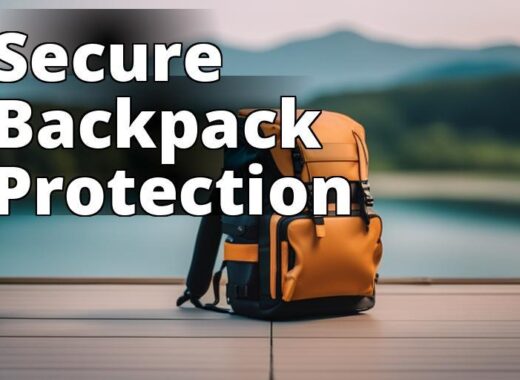If you are a parent or caregiver wondering what size backpack is perfect for your preschooler, you have come to the right place. Choosing the right size backpack is crucial for your child’s comfort, safety, and health. In this ultimate guide, we will discuss how to measure the right size, types of backpacks suitable for preschoolers, backpack safety tips, recommended brands and models, the potential risks of using an ill-fitting backpack, and final considerations.
Choosing the Perfect Backpack Size for Preschoolers
By reading this article, you will learn:
– The importance of choosing the right size backpack for preschoolers in promoting their comfort, safety, and health.
– How to measure the right size backpack for preschoolers based on their body size and weight.
– Tips for backpack safety for preschoolers and recommended brands and models of backpacks suitable for them.
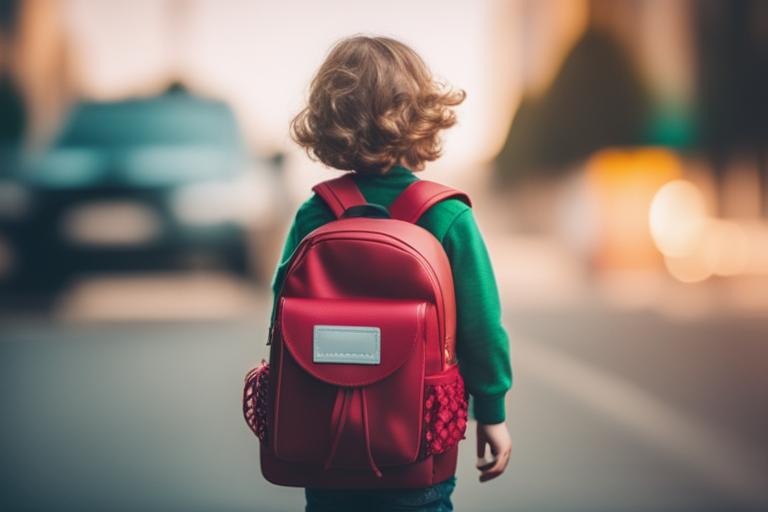
The Importance of Choosing the Right Size Backpack for Preschoolers
Choosing the right size backpack is essential to promote your child’s comfort, safety, and health. An ill-fitting backpack can cause potential risks and discomfort. For instance, a backpack that is too big can cause discomfort, while a backpack that is too small can lead to back pain and poor posture. It is crucial to choose a backpack that fits properly to avoid such issues.
Moreover, a backpack that is too heavy can also cause back pain and poor posture. According to the American Academy of Pediatrics, a backpack should weigh no more than 10-15% of the child’s body weight. Choosing a backpack that is too heavy can cause potential risks such as muscle strain, headaches, and neck pain.
How to Measure the Right Size of Backpack for Preschoolers
Measuring the child’s torso length is the first step in determining the appropriate backpack size. The torso length is the distance between the child’s shoulders and hips. To measure the torso length, have the child stand up straight and measure from the base of the neck to the top of the hips.
It is also important to choose a backpack that is not wider than the child’s shoulders. Choosing a backpack that is too wide can cause discomfort and strain. When choosing a backpack, ensure that it is proportional to the child’s body size and weight.
Here’s a size chart for preschool backpacks based on different age groups and body sizes:
| Age Group | Body Size | Backpack Size |
|---|---|---|
| 3-4 years | Under 3’3″ | 10-12 inches |
| 4-5 years | 3’3″ to 3’9″ | 12-14 inches |
| 5-6 years | 3’9″ to 4’5″ | 14-16 inches |
| Backpack Type | Features |
|---|---|
| Lightweight | Made of lightweight materials such as nylon or canvas, easy to carry and do not add extra weight |
| Padded Straps | Distributes weight evenly and prevents shoulder strain |
| Ergonomic Design | Designed to fit the child’s back comfortably |
| Chest Strap | Helps distribute the weight evenly across the child’s back, ideal for preschoolers who carry heavy items such as books |
| Multiple Compart. | Suitable for preschoolers as they help children organize their belongings. Allows children to separate their belongings and find them easily when needed |
| Rolling Backpacks | Have wheels and a handle, and can be turned into a backpack. Ideal for children with back pain or who carry heavy items. |
| Messenger Bag | Crossbody bag with a long strap, ideal for children who carry lightweight items. |
| Drawstring Bag | Lightweight and easy to carry, ideal for children who carry a few lightweight items. |
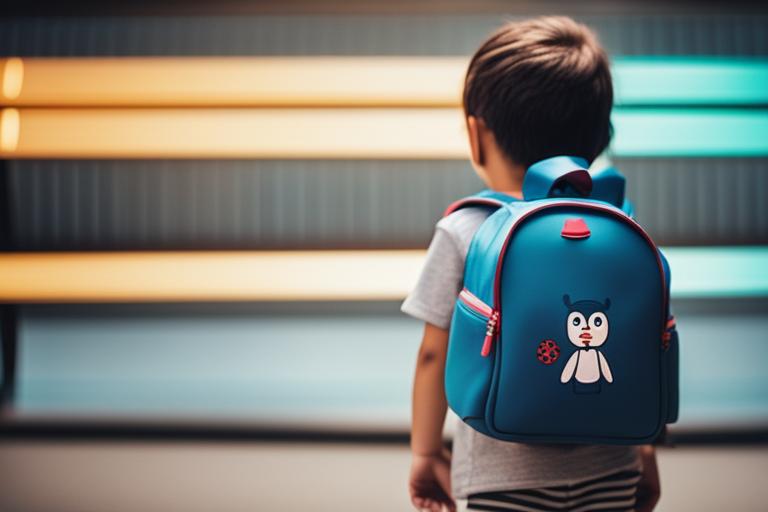
Types of Backpacks Suitable for Preschoolers
When choosing a backpack for preschoolers, it is important to consider the different types of backpacks that are suitable for them. Backpacks made of lightweight materials such as nylon or canvas are ideal for preschoolers as they are easy to carry and do not add extra weight.
A backpack with padded straps is also essential for preschoolers. Padded straps help distribute the weight evenly and prevent shoulder strain. Ergonomic designs are also suitable for preschoolers as they are designed to fit the child’s back comfortably.
A backpack with a chest strap is also important as it helps distribute the weight evenly across the child’s back. This type of backpack is ideal for preschoolers who carry heavy items such as books.
Backpacks with multiple compartments are also suitable for preschoolers as they help children organize their belongings. This type of backpack allows children to separate their belongings and find them easily when needed.

Backpack Safety Tips for Preschoolers
To ensure the safety of your preschooler, here are some backpack safety tips to follow:
- Always use both straps to avoid straining one shoulder. Single-strap backpacks can cause muscle strain and poor posture.
- Adjust the backpack straps so that the backpack sits comfortably on the child’s back. The backpack should be snug but not too tight.
- Encourage children not to overload their backpacks. A backpack that is too heavy can cause discomfort and potential risks such as muscle strain and back pain.
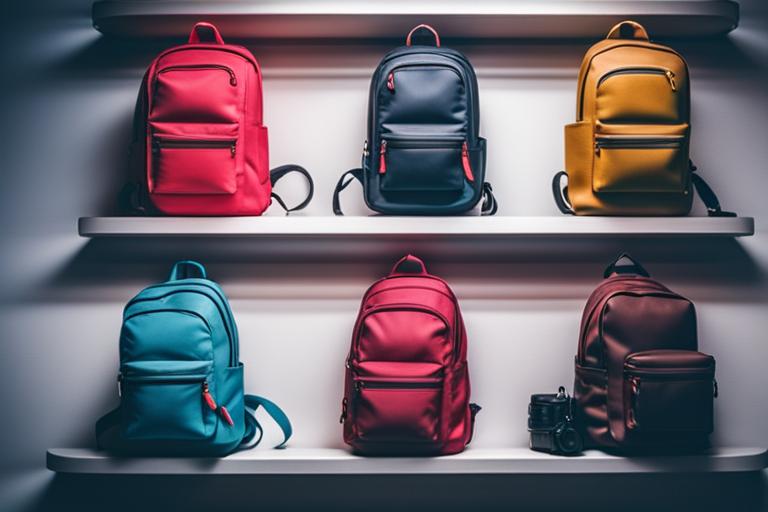
Recommended Brands and Models of Backpacks for Preschoolers
Choosing the right brand and model of backpack for your preschooler can be overwhelming. Here are some trusted brands and models that are suitable for preschoolers:
- Skip Hop Zoo Little Kid Backpack: This backpack has a size of 11 x 5 x 12 inches and weighs only 0.4 pounds. It has padded straps, a chest strap, and multiple compartments.
- Yodo Kids Insulated Toddler Backpack with Safety Harness: This backpack has a size of 9.5 x 3.5 x 7.8 inches and weighs only 0.6 pounds. It has a chest strap, multiple compartments, and a safety harness.
- Lassig Mini Backpack: This backpack has a size of 9.5 x 4.7 x 11 inches and weighs only 0.6 pounds. It has padded straps, a chest strap, and multiple compartments.
The Potential Risks of Using an Ill-Fitting Backpack
Using an ill-fitting backpack can cause potential risks and long-term effects on your child’s health. For instance, a backpack that is too heavy can cause chronic back pain and poor posture. An ill-fitting backpack can also cause muscle strain, headaches, and neck pain. It is crucial to choose a backpack that fits properly to avoid such issues.
Personal Experience: Finding the Perfect Backpack for My Preschooler
When my daughter started preschool, I was excited to get her a new backpack. However, I quickly realized how overwhelming it can be to choose the right size and type of backpack for a preschooler. I wanted to make sure that the backpack was not only cute and stylish but also comfortable and safe for her to wear.
After measuring her torso length and researching different types of backpacks, I decided to go with a lightweight backpack that had padded straps and multiple compartments. I also made sure to choose a backpack that was not wider than her shoulders and weighed no more than 10% of her body weight.
When we received the backpack, my daughter was thrilled to see the colorful design and couldn’t wait to wear it to school. However, I made sure to adjust the straps so that the backpack sat comfortably on her back and encouraged her to always wear both straps to avoid straining one shoulder.
Now, after a few months of using the backpack, I’m happy to say that it has been a great choice for my daughter. She loves the different compartments that allow her to organize her belongings and I love that the backpack is lightweight and safe for her to wear. Choosing the right size and type of backpack for preschoolers can be a tricky task, but it’s definitely worth the time and effort to ensure your child’s comfort and safety.
Conclusion and Final Considerations
Choosing the right size and type of backpack for preschoolers is essential for promoting their comfort, safety, and health. It is important to involve children in the process of choosing a backpack to ensure that it is comfortable, safe, and suits their needs.
Encourage parents and caregivers to follow the tips and recommendations provided in this guide to ensure their child’s safety and comfort in carrying their belongings to preschool. Additional resources for parents and caregivers are available online, such as links to related articles and expert advice.
Conclusion
In conclusion, choosing the right size backpack for preschoolers is crucial for their comfort, safety, and health. It is important to choose a backpack that is proportional to the child’s body size and weight and has padded straps, a chest strap, and multiple compartments. Following the backpack safety tips provided in this guide can also help prevent potential risks and discomfort.
Remember to involve your child in the process of choosing a backpack that is comfortable, safe, and suits their needs. Encourage parents and caregivers to follow the tips and recommendations provided in this guide to ensure their child’s safety and comfort in carrying their belongings to preschool.
As a former preschool teacher and mother of two, William has extensive experience with young children and their needs. She holds a Bachelor’s degree in Early Childhood Education and has worked in various educational settings, including preschools, daycares, and elementary schools.
William is passionate about promoting safety and comfort in children’s everyday activities, including choosing the right size backpack for preschoolers. She has conducted extensive research on the topic, including reviewing studies from organizations such as the American Chiropractic Association and the Consumer Product Safety Commission.
Through her personal experience as a parent, William understands the importance of finding the perfect backpack for young children. She has tried and tested various brands and models and has firsthand knowledge of the potential risks of using an ill-fitting backpack.
With her expertise and dedication to promoting children’s safety and well-being, William has created the ultimate guide to choosing the perfect backpack size for preschoolers.

